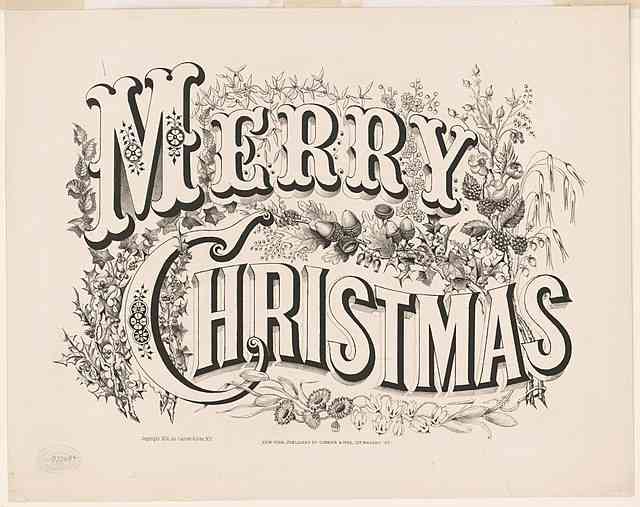
A sixteenth century Christmas
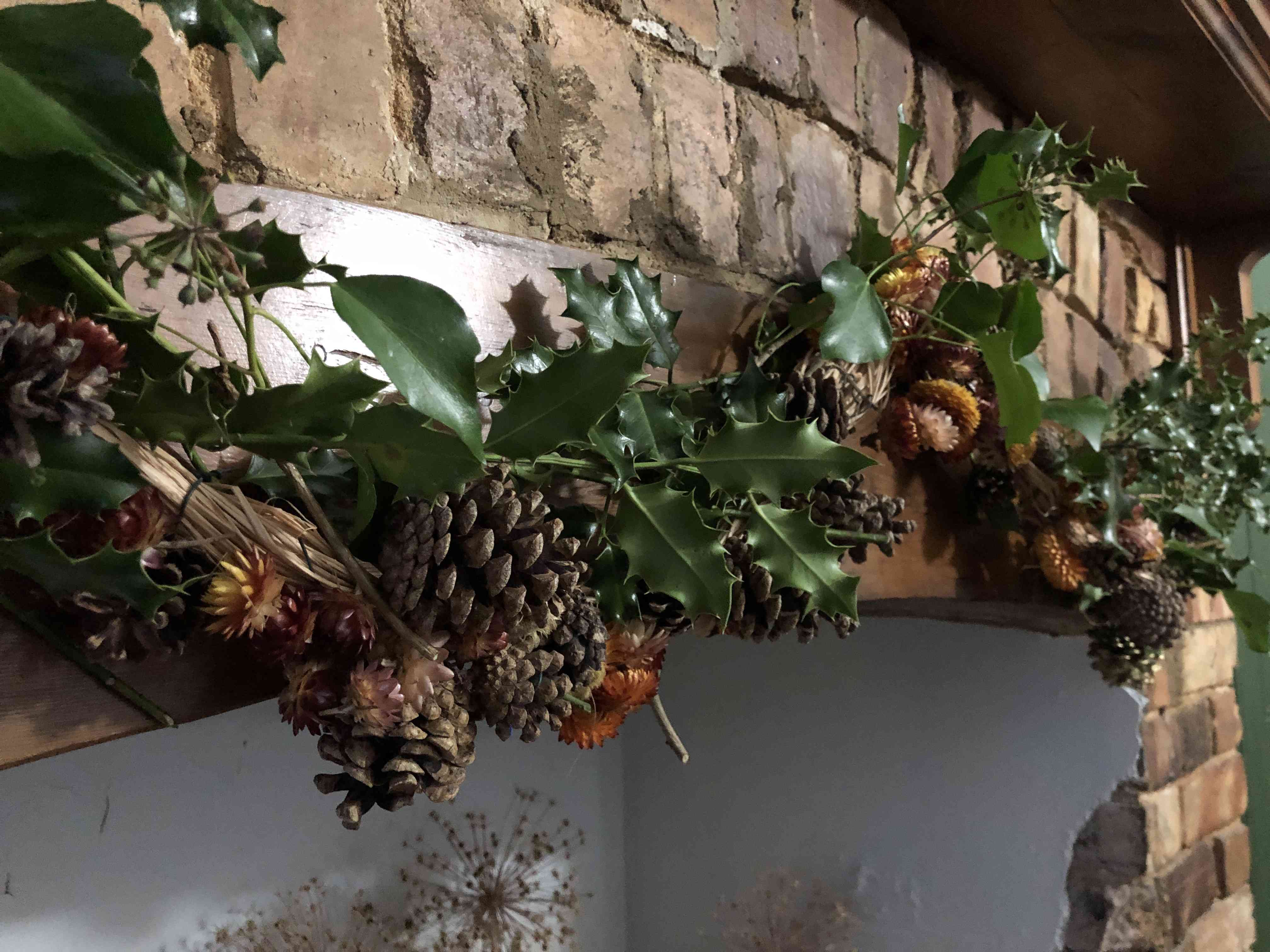
A sixteenth century Christmas
We know quite a lot about how the wealthy spent Christmas in the sixteenth century. Surviving account books from Royal, noble and gentry households paint a picture of lavish feasts and costly entertainment. For the less well off Christmas must have come as a welcome holiday, relief from the drudgery of life in the long, cold winter season.
On Christmas Eve men, women and children went out into the woodlands to cut greenery such as holly, ivy and mistletoe to decorate houses and churches as they had for pre-Christian winter festivals. During the twelve days of Christmas no-one was allowed to work, except to tend animals or in the kitchens of the great houses and palaces. Spinning wheels were threaded with flowers and greenery to stop them turning, removing any temptation for women to continue their work.
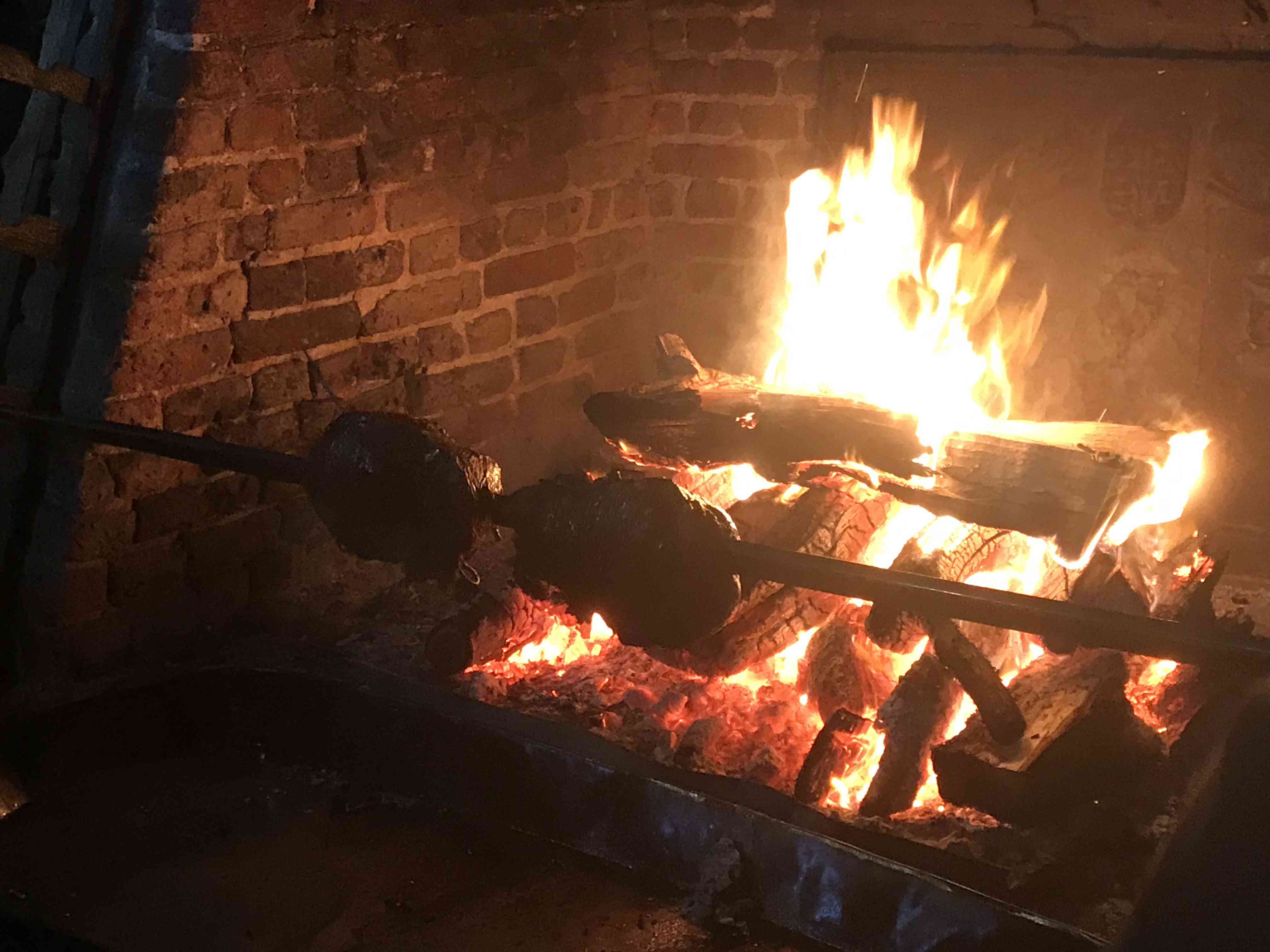
Yule logs, great tree trunks that burned for the whole festival, were becoming less common as open hall houses gave way to buildings divided into more rooms with chimneys, but smaller fires were lit and candles burned to bring light and warmth to the darkest days of winter.
Copious amounts of food were at the heart of the festivities. As now, it seems Christmas was a time to eat to excess. Many of our favourite dishes can be traced back to the time of the Tudors. The advent fast lasted right up to Christmas Eve when a light meal of fish was eaten. Everyone went to church on Christmas morning. The law that Edward VI passed in 1551 that everyone must walk to church on Christmas Day is technically still in force to this day. After Mass the twelve days of festivities started with a magnificent feast featuring an enormous quantity of meat.
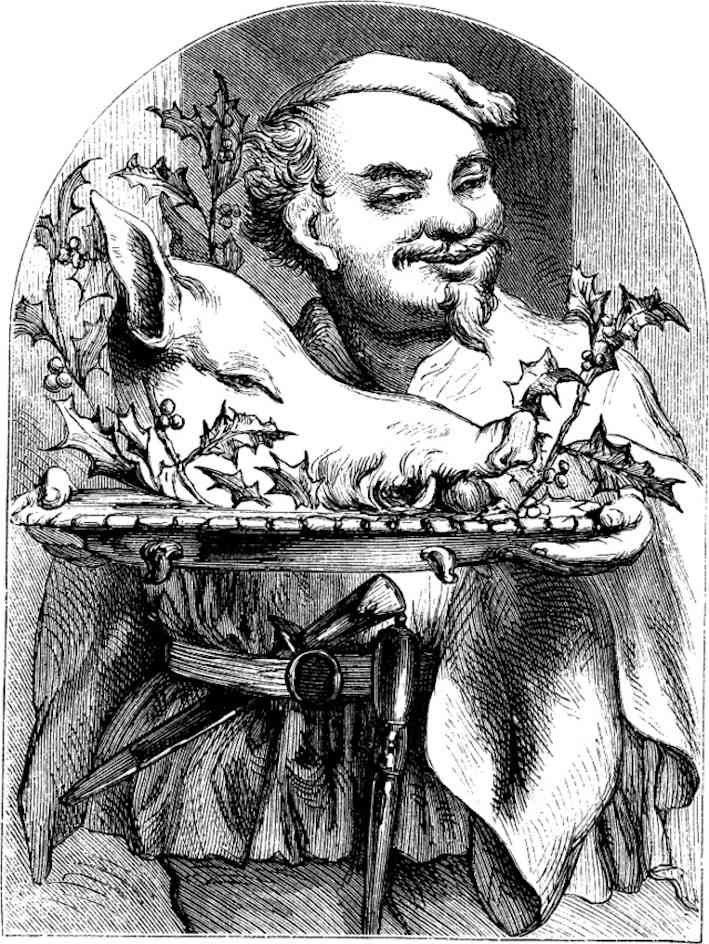
Early in the century the traditional Boar’s head, boned, stuffed with forcemeat, dressed with bay and rosemary, with an apple in the mouth, would be borne in with great ceremony and singing. As the population of wild boars declined the dish was replaced by meat from domesticated animals which were slaughtered in November. The meat was preserved by pickling, sousing, or smoking, and brawn was popular, spiced, sometimes cooked in wine, and garnished with herbs, fruits and a sprig of yew. Royal Christmas dinners included peacocks, venison, beef, mutton, fish, hens and capons and wide variety of other birds — cranes, herons, swans, bitterns, partridges, plovers, woodcock and snipe are mentioned in various accounts.
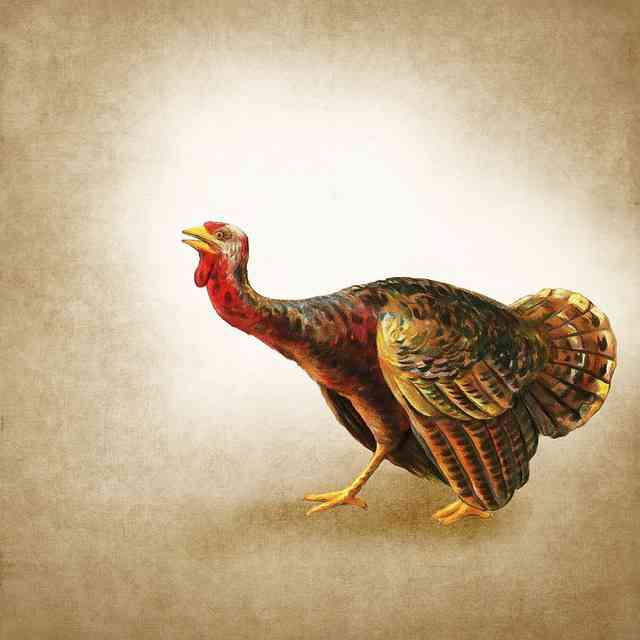
Turkey was first introduced into England around 1526 when six were sold for 2d each at Bristol market. A sailor named William Strickland lays claim to be the first to bring them from the Americas, but he was born after 1526, so may not entirely have deserved the turkey cock that featured on the coat of arms he was granted when he was knighted in 1550. There are a couple of theories about the name “turkey”; people may have thought erroneously that the birds came from the East, actually from Turkey or the taste may have been similar to another bird which was already known as a Turkish chicken (possibly a guinea fowl). By the end of Queen Elizabeth’s reign turkey had become a regular feature on Royal Christmas tables, often replacing peacock, and in the started to appear in the larger households throughout England too.
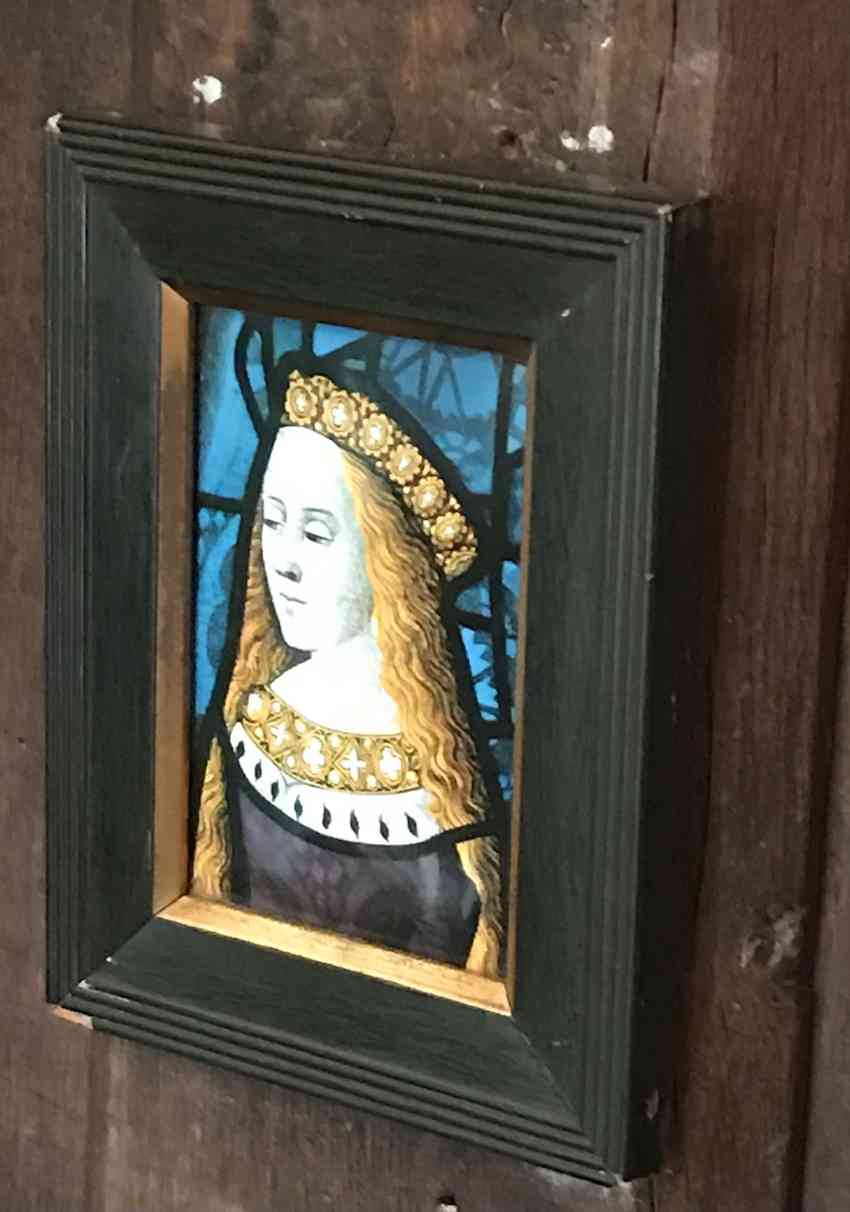
The wealthy spared no expense at Christmas. The account books of Katherine Plantagenet Courtenay, younger sister of Elizabeth of York and Countess of Devon (1479-1527), show that during her widowhood at Tiverton Castle she entertained on a grand scale, especially over the festive period. Between Michaelmas 1522 and Michaelmas 1523 her steward bought forty nine oxen, four kine, one bull, four hundred and ninety-nine sheep (muttons), as well as quantities of pork and brawn. Large consignments of fish are listed, and 69s 1d was spent on twelve bushels of salt. Among the spices were cloves, cinnamon, green ginger, mace and saffron. Sugar weighing four hundred and forty-three pounds cost £10. 9s.and a farthing. Almonds, raisins, prunes, rice and figs are also listed. A good portion of these provisions were devoted to the Christmas feast, augmented by gifts from Devon notables. For example, on 21 December 1523 the Abbot of Ford gave a boar and two swans. Two days later the Bishop of Exeter gave two oxen. Other gifts included a red deer, hares, pheasants, partridges, heronshaws (young herons), fresh salmon, conies, hens, a peacock and a peahen, sugar loaves, ginger and cherries.
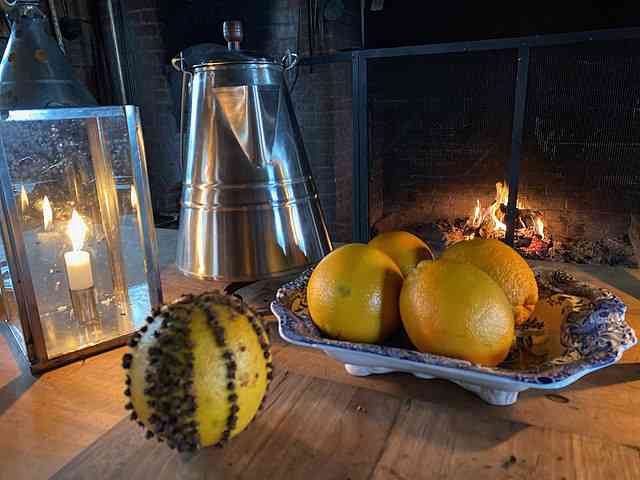 The account book for Michaelmas 1523 - to Michaelmas 1524 tells us that the Countess’ steward also bought one hundred sour oranges, half a hundred sweet oranges, twelve pomegranates, a gallon of honey, and apples and wardens (pears) ‘against the Christmas feast’. Oats for fattening swans that would grace the Christmas table cost 17d and two dozen supper lights for Twelfth Night weighing five pounds were bought at a cost of 3s 9d. Then there was money for Christmas gifts to be sent to the King and Queen for the traditional gift exchange on New Year's Day, and to her son Henry Courtenay who in 1523 received two buckles, two pendants, six studs, six oiletts (eyelets), six aglets (for the end of points or laces), and gold and enamel garters. He must have cut a splendid figure.
The account book for Michaelmas 1523 - to Michaelmas 1524 tells us that the Countess’ steward also bought one hundred sour oranges, half a hundred sweet oranges, twelve pomegranates, a gallon of honey, and apples and wardens (pears) ‘against the Christmas feast’. Oats for fattening swans that would grace the Christmas table cost 17d and two dozen supper lights for Twelfth Night weighing five pounds were bought at a cost of 3s 9d. Then there was money for Christmas gifts to be sent to the King and Queen for the traditional gift exchange on New Year's Day, and to her son Henry Courtenay who in 1523 received two buckles, two pendants, six studs, six oiletts (eyelets), six aglets (for the end of points or laces), and gold and enamel garters. He must have cut a splendid figure.
It’s hard for us to comprehend just how much they ate. At Christmas dinner in 1551 Sir William Petrie of Ingatestone Hall sat down with his family and guests to six boiled and six roast joints of beef, a neck of mutton, a loin of pork, a breast of pork, a goose and four coneys. For supper they had five more joints of mutton, a neck of pork, two coneys, a woodcock and a venison pasty. That was just the meat course! They may also have had an appetiser of plum porridge to line their stomachs. This was a thick broth of mutton or beef boiled in a skin with plums, dried fruit, breadcrumbs and wine. Later in the sixteenth century flour was added and it became a sort of pudding or cake. Much later the Victorians removed the meat, spiced it all up and created what we now serve as a desert - Christmas Pudding. The figgy pudding we know form the carol “We Wish you a Merry Christmas” was an alternative appetiser which included figs, almonds, raisins, ginger and honey.
Fruit pies and pasties, jellies, marchpane (marzipan), gingerbread, sweetmeats and sugar “subtleties” — fantastic sugar sculptures — followed at court or gentry feasts. At the same Christmas Day meal in 1551 Sir William and his guests had eight warden (pear) pies, which would have been flavoured with costly spices such as cloves, mace, cinnamon and ginger and sprinkled with sugar. Frumenty was a popular desert — wheat, boiled in milk, with eggs, fruit, spices, sugar ,almonds and cream. Elinor Fettipace of Appleton Manor, Oxfordshire, who was distantly connected to Sir Walter Raleigh through the Thynne family, compiled her “receipt book” in 1604. She includes a recipe or a suet pudding, which again resembles our Christmas pudding:
Take 12 eggs and break them then take crumbs of bread and mace, currants, and dates cut small, and some ox suet small minced and some saffron, put all these in a sheep’s maw and boil it…….
Mince pies or Christmas pies were made with shredded leftover meat — mutton was preferred as a reference to the shepherds—and dried fruits, suet, sugar and spices. There were supposed to be thirteen ingredients in honour of Christ and his apostles. In some high status households the pies were gilded, which with the spices referenced the gifts of the Magi. These pies were shaped like a crib and a figure of the baby Jesus was often moulded from pastry to adorn the top. They were not small, bite-sized morsels like our mince pies, but large pies shared out with a spoon, since it was considered unlucky to cut them with a knife. The youngest person at table got the first slice. During the 1640s mince pies were frowned on by Puritans who associated them with Catholicism. But the suggestion that Cromwell brought in a law that specifically banned them is a myth. Christmas Day did fall on a fast day in 1644, and mince pies were therefore not allowed because they contained meat. There were also wider efforts to clamp down on Christmas celebrations, so it may have been around that time that smaller, easier to hide, round pies became popular rather than the larger crib-shaped version, with its reminder of the nativity.
For the poor people meat was a rare treat. Some might own a pig or a share in a pig, or might have poultry or goose, or whatever other birds they could catch. They also benefitted greatly form the generosity and hospitality of the big households. It was usual for people to go house to house and be received and fed. Leftovers were often provided for the poorest people and the more affluent distributed “boxes” containing money to servants, tradespeople, apprentices and those in need. The alms boxes in churches were opened on St Stephens Day — what we now call Boxing Day.
The feasting and fun continued for each of the twelve days, ending with another massive feast on Twelfth Night when the Twelfth Cake, a baked cake of dried fruit, flour honey and spices, was served. Perhaps this was the forerunner of our Christmas Cake. A dried pea or dried bean was baked inside the Twelfth Cake and whoever received the slice that contained it became King or Queen of the Pea or Bean for the rest of the day. They would then lead the singing and dancing and could order everyone about. This was one example of role reversal where lowly servants or children might have the ordering of things. Large households might employ a “Lord of Misrule” to preside over the proceedings throughout the twelve days. Sometimes the Lord of Misrule was accompanied by other fools in fancy dress, one often called Sir Christmas or Prince Christmas, who had to make sure everyone made merry. Even the Lord of the Manor must obey the Lord of Misrule. In a similar way, before the Reformation, boy bishops held sway in the Abbeys. Chosen from amongst the choristers the boy bishop held power form Saint Nicholas’ Day (6 December) to Holy Innocents’ Day (28 December) as if he were indeed a Bishop. He took services, preached sermons and could even appoint cathedral canons from amongst the other choirboys.
It was also a time for sport, hunting and other outdoor pass times, though Henry VIII passed a law banning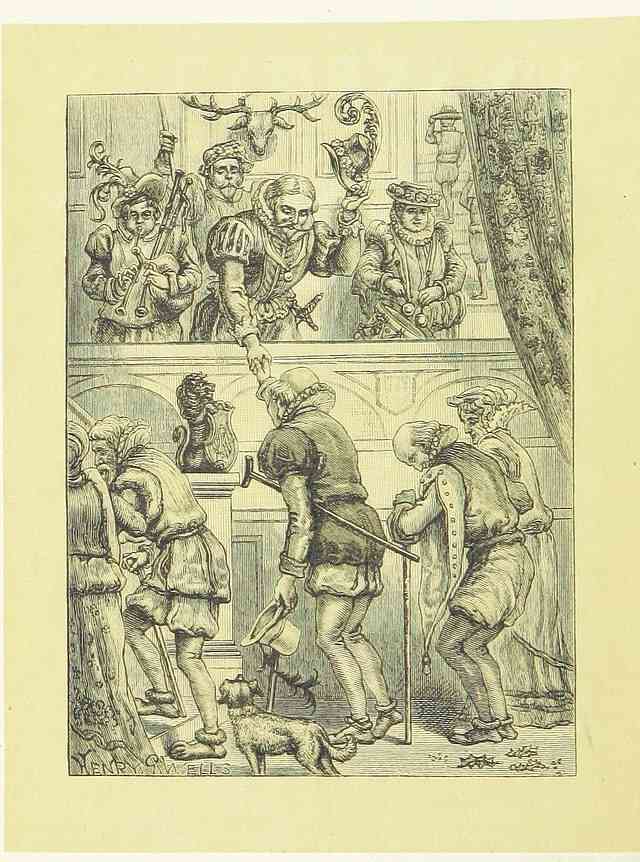 all sports on Christmas Day itself, with the exception of archery. Indoor games included shovelboard (for the aristocrats), shove groat (for the lower classes), card games and dice. These games were often played for money. There were also versions of more boisterous games like hide and seek and hoodman blind (blind man’s buff). Music and singing livened things up even more. Some of our best known carols have their roots in this time, although the words may have changed. “The First Nowell,” and “God Rest Ye Merry, Gentlemen” are both thought to date from the sixteenth century. Often carols were sung by the “town waits,” singers appointed to provide music for ceremonial occasions, mainly out of doors. They would go from door to door, hoping to be given food or money in exchange for songs. The waits of Exeter received 10s from the Countess of Devon at Twelfth Night at Tiverton Castle in 1523.
all sports on Christmas Day itself, with the exception of archery. Indoor games included shovelboard (for the aristocrats), shove groat (for the lower classes), card games and dice. These games were often played for money. There were also versions of more boisterous games like hide and seek and hoodman blind (blind man’s buff). Music and singing livened things up even more. Some of our best known carols have their roots in this time, although the words may have changed. “The First Nowell,” and “God Rest Ye Merry, Gentlemen” are both thought to date from the sixteenth century. Often carols were sung by the “town waits,” singers appointed to provide music for ceremonial occasions, mainly out of doors. They would go from door to door, hoping to be given food or money in exchange for songs. The waits of Exeter received 10s from the Countess of Devon at Twelfth Night at Tiverton Castle in 1523.
Plays were a popular entertainment too. At Christmas and other festivals trade guilds put on “mystery” plays based on bible stories. The name comes from “mysterium,” meaning a craft, trade or occupation. Troops of travelling actors performed similar plays in marketplaces or inns, and a different set of wandering actors, the “mummers,” wore masks and disguises and performed folk plays during Yuletide. Mummers’ plays introduced many elements of our pantomime, like stage fights, coarse humour, fantastical creatures and gender reversal.The players who performed for the Countess of Devon on New Year’s Eve and New Year’s Day in 1523 were paid 13s.4d.
So Christmas was a time when roles and ranks could be topsy-turvy, when there were games, plays, masques, singing, dancing and all sorts of revels and, of course, plenty of feasting. Add in a good quantity of alcohol and you have a recipe for riotous fun. Favourite drinks were imported wine, sometimes spiced, mead and Christmas ales, which were stronger than the small ale most ordinary people were used to. Beer, which introduced hops into the brewing process, became more popular, despite King Henry VIII’s efforts to ban it on the grounds that it made you fat. Spices and pressed apples were added to beer to make a drink called lambs wool, because the apples created a froth on top. This was often passed around at the end of an evening in a “wassail’ bowl. Wassailing, was an ancient tradition, practised by rich and poor alike. A special wooden bowl, decorated with ribbons, was filled with hot ale, beer or cider, apples, sugar, spices and rosemary was passed around with cries of “Wassail,” to which the reply was “Drink hail”. A crust of bread floated on top and was removed to take a drink from the bowl. This gave rise to our practice of “drinking a toast” or “raising a toast” at celebrations. Children would also carry the wassail bowl form house to house, hoping that it would be refilled. Farmers still go out to wassail their apple tress on old New Year’s Eve, 14 January (the date has moved because of changes to the calendar, in some parts of the West Country, including Devon. The trees are blessed by pouring a libation from the wassail bowl onto the roots in the hope that the will bear a good crop. Shotguns are often fired up into the branches, saucepan-lids are banged and there is a lot of noise to frighten off any bad spirits that might be lurking in the branches.
With Twelfth Night the celebrations came to an end. Christmas was done for another year. All the green stuff had to be taken down, or bad luck would follow. Everyone returned to work on Plough Monday, the first Monday after Twelfth night. Perhaps some still had a sore head!
